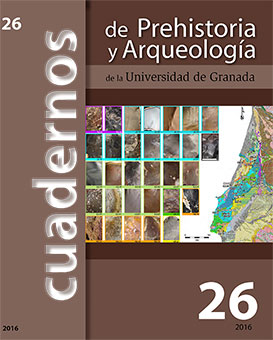FLINT IN THE BASQUE-CANTABRIAN BASIN AND THE WESTERN PYRENEES: LITHIC RAW MATERIAL IN PREHISTORY
Main Article Content
Abstract
The existence of thick sedimentary series in the Basque-Cantabrian Basin and the Western Pyrenees helps the outcropping of many and vary geological formations with important silicifications. The study of their different types and their host rocks allows knowing which the disponibility of this important mineral resource was in Prehistoric times. The petrological characterization also allows identifying the geological origin of the lithic remains from the archaeological sites. It has been possible to differentiate 5 Groups of flint depending on the formation environment, 14 Classes if the geological age is considered and more than 20 Types or geological formations. According to the ways rocks are used in prehistoric sites, in turn, they can be classified into: Not used, Local, Regional, Tracer and Super-Tracer flints. Since Neolithic periods a new type of flint appears: the Evaporítico del Ebro (Super-Tracer), with outcrops and workshops outside the geological environment under this study.



